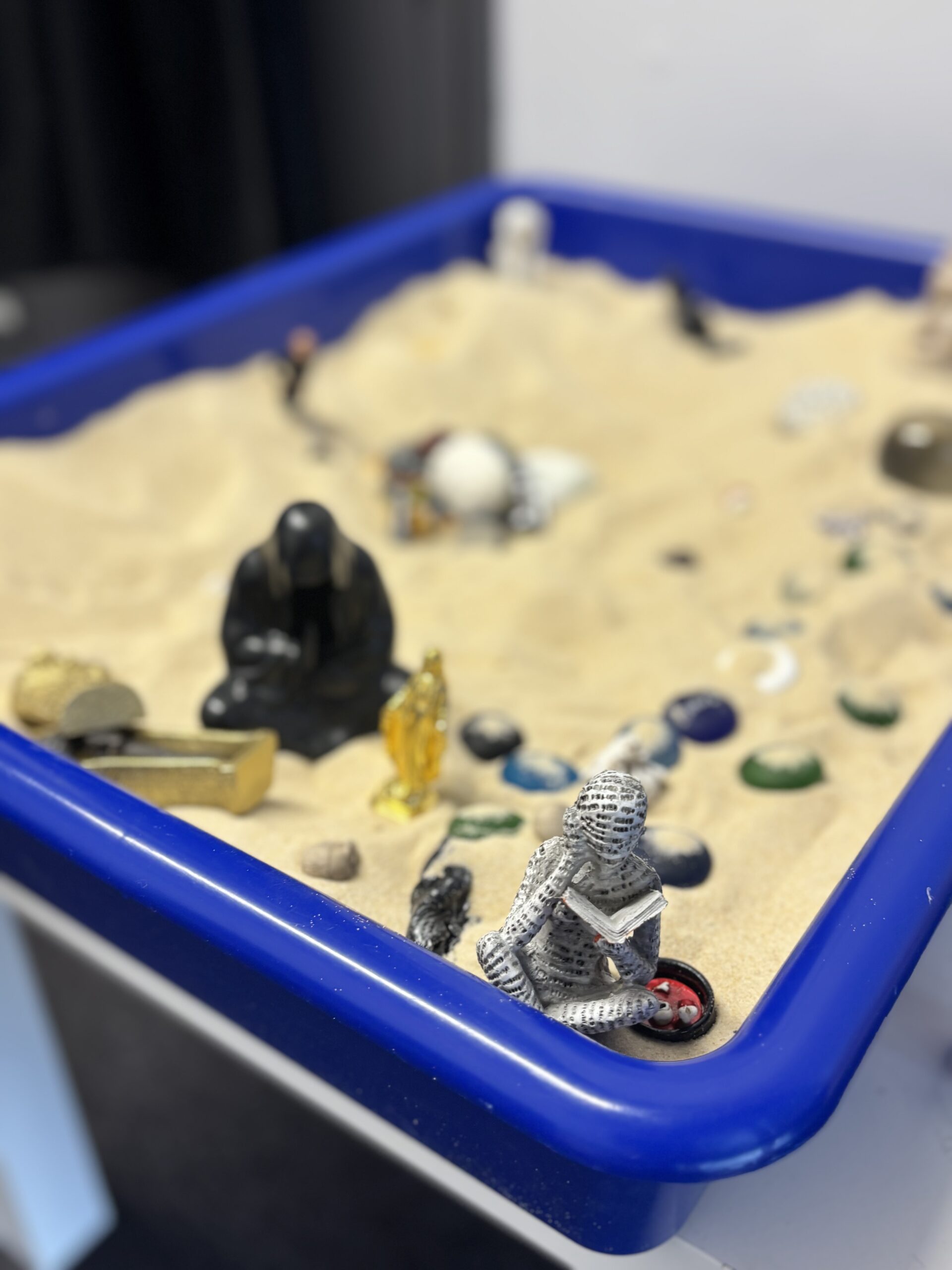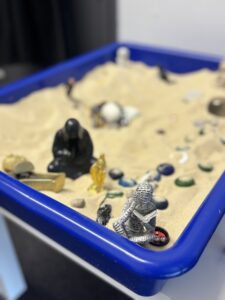
23 Apr Working with the Sand
Sand Therapy for Children, and why it’s a good idea.
My extensive work with young people in secondary schools made me realise that for some young people, face to face counselling can often result in a struggle to articulate complex emotions with words. Sand therapy allows them to “show” instead of “tell”, using miniature figures and scenes to express what’s going on in heir inner world. Within the confines of the sand tray, children can externalize fears, anger, sadness, or confusion. It can feel less intimidating than direct conversation with an adult and I have seen it work with great results.
As a psychodynamic therapist, working with the symbolic is what we do, so i was intrigued to learn about the origins of working in the sand. The method was pioneered by Dr. Margaret Lowenfeld, a British paediatrician and child psychiatrist, is considered one of the pioneers of sand tray therapy. She developed a method she called the “World Technique” in the 1920s, inspired by her work with children and influenced by H.G. Wells’ book Floor Games, in which Wells described playing imaginative games with his children using miniatures and toys. Lowenfeld provided children with a sand tray and miniature figures, allowing them to create “worlds” that expressed their thoughts, feelings, and experiences nonverbally. Sand tray therapy has since expanded into various psychotherapeutic modalities, used with both children and adults. It is employed to treat trauma, anxiety, grief, and more, providing a safe, nonverbal medium to access and process difficult emotions and experiences.

So how does it work?
Sessions are 30 minutes long, and the young person is invited to create a world using symbols. Kids create scenes that often reflect their inner world, and I gently explores these stories, helping children process trauma, loss, or anxiety in a symbolic and developmentally appropriate way. What is brilliant about it is that this child has total control over the world they create in the sand. This is empowering, especially for those who have experienced situations where they felt powerless. Over time these experiences can be made sense of, and the child gains a sense of autonomy and power. The shared experience of building and exploring the sand tray fosters trust and connection between child and therapist, which is essential for effective therapy and everyday relationships.
Contact me to arrange a session.

No Comments